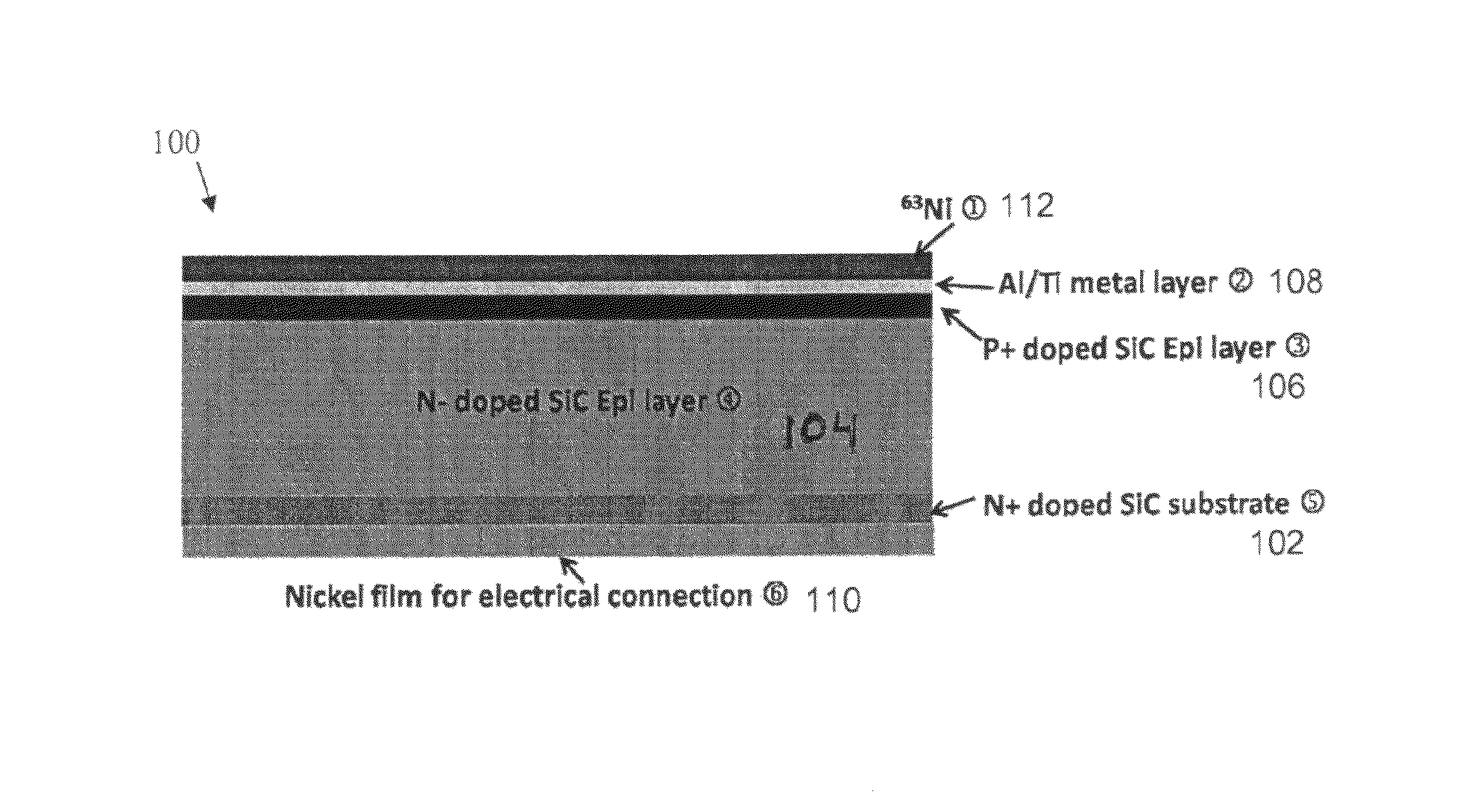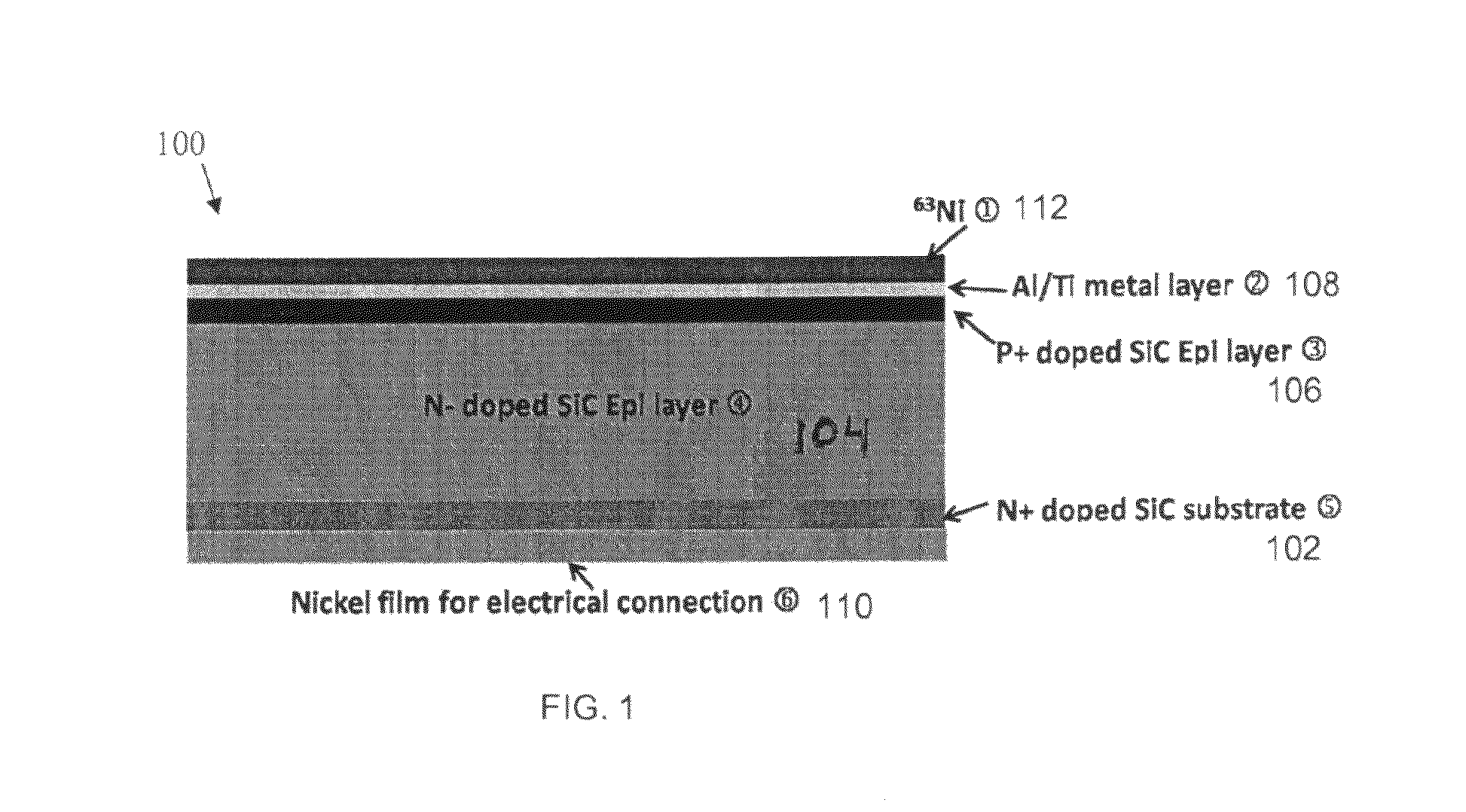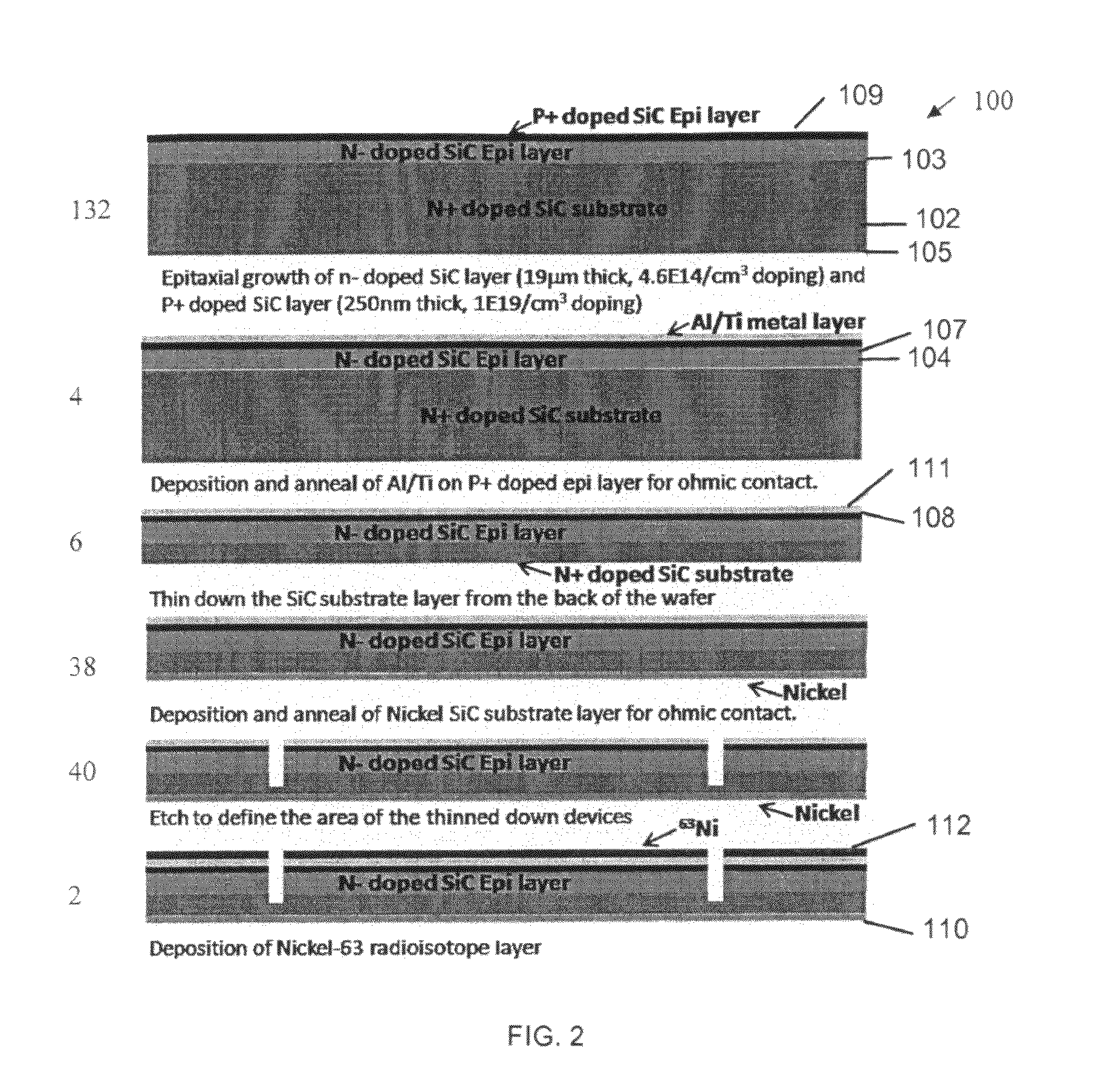Betavoltaic apparatus and method
a betavoltaic and battery technology, applied in the field of betavoltaics, can solve the problems of significant increase in leakage current, increase in packaging volume, and decrease in the overall power density of the battery, and achieve high fuel-fill efficiency, high voltage and power density, and maximize efficiency
- Summary
- Abstract
- Description
- Claims
- Application Information
AI Technical Summary
Benefits of technology
Problems solved by technology
Method used
Image
Examples
Embodiment Construction
[0028]Reference will now be made in detail to the present exemplary embodiments of the invention, non-limiting examples of which are illustrated in the accompanying drawings. Wherever possible, the same reference numbers will be used throughout the drawings to refer to the same or like parts.
[0029]FIG. 1 schematically illustrates a betavoltaic device 100 according to a non-limiting, exemplary embodiment of the invention. Betavoltaic device 100 includes an N+ doped silicon carbide (SiC) substrate 102 having a top surface 103 and a bottom surface 105. The device 100 further includes an N− doped SiC epitaxial layer 104 having a top surface 107, disposed immediately adjacent the top surface 103 of the SiC substrate; a P+ doped SiC epitaxial layer 106 having a top surface 109, disposed immediately adjacent the top surface 107 of the N− doped SiC epitaxial layer; an aluminum / titanium ohmic conductive layer 108 having a top surface 111, disposed immediately adjacent the top surface 109 of ...
PUM
 Login to View More
Login to View More Abstract
Description
Claims
Application Information
 Login to View More
Login to View More - R&D
- Intellectual Property
- Life Sciences
- Materials
- Tech Scout
- Unparalleled Data Quality
- Higher Quality Content
- 60% Fewer Hallucinations
Browse by: Latest US Patents, China's latest patents, Technical Efficacy Thesaurus, Application Domain, Technology Topic, Popular Technical Reports.
© 2025 PatSnap. All rights reserved.Legal|Privacy policy|Modern Slavery Act Transparency Statement|Sitemap|About US| Contact US: help@patsnap.com



